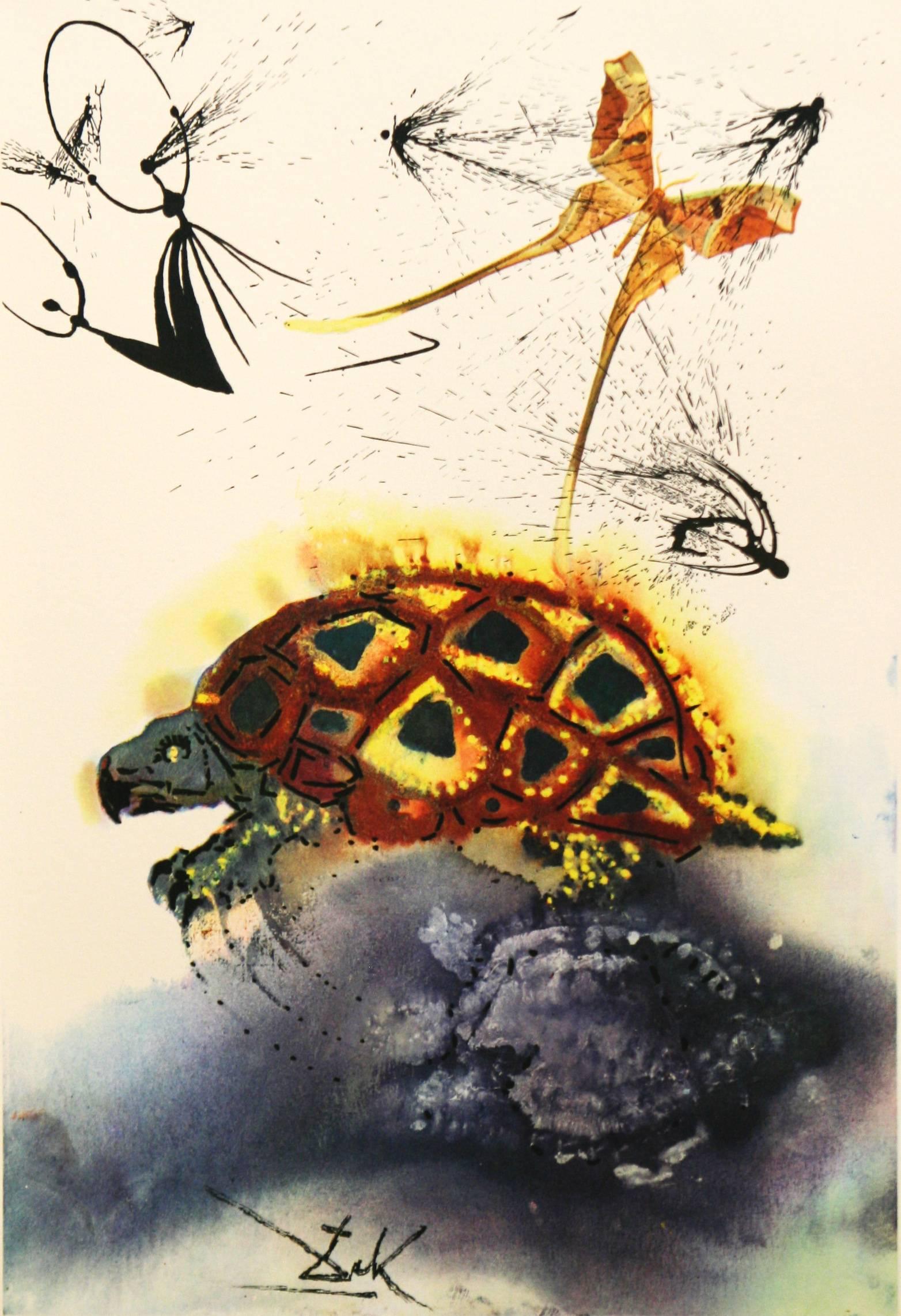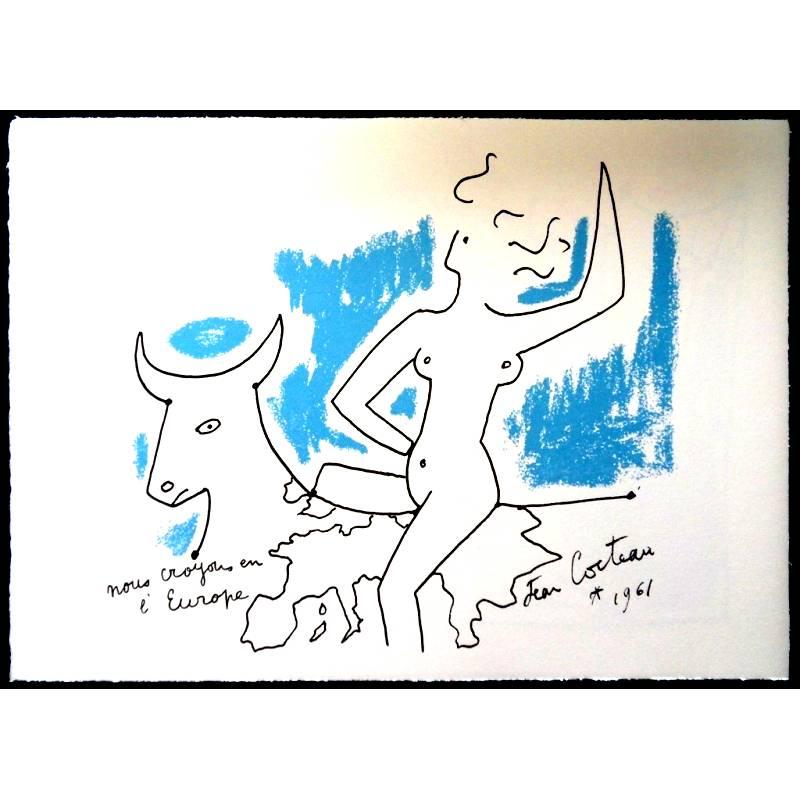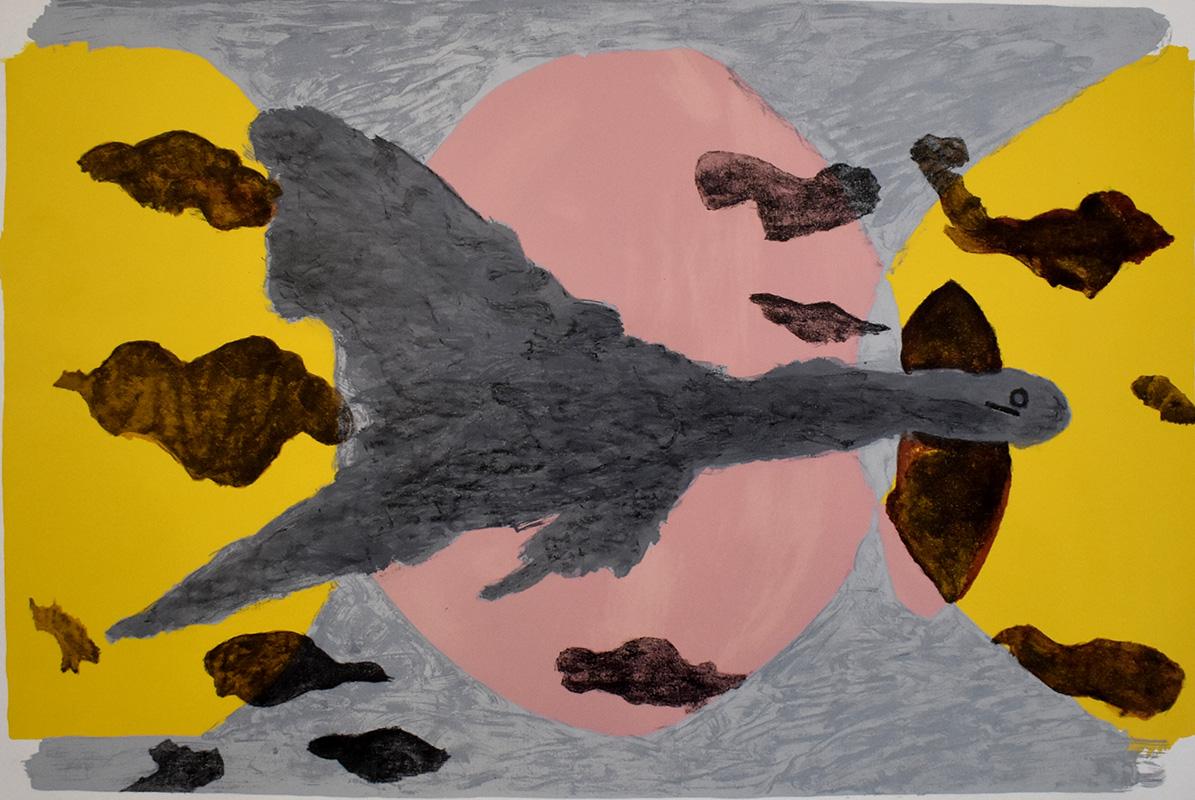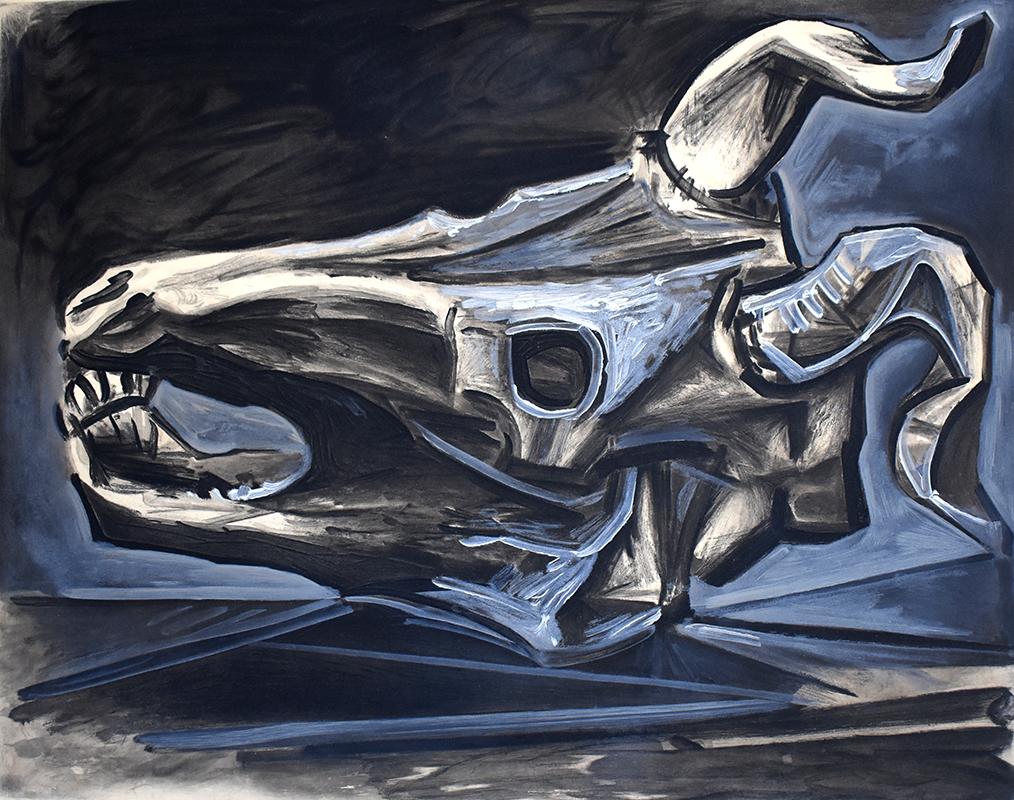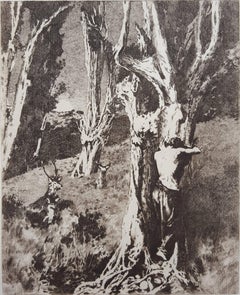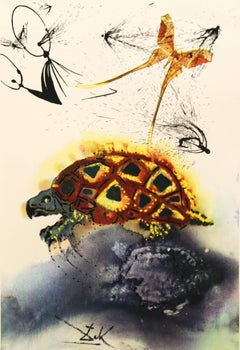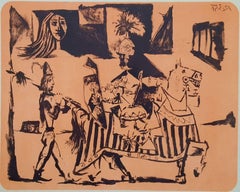
The Departure
View Similar Items
Want more images or videos?
Request additional images or videos from the seller
1 of 9
(after) Pablo PicassoThe Departure1962
1962
About the Item
- Creator:(after) Pablo Picasso (1881 - 1973, Spanish)
- Creation Year:1962
- Dimensions:Height: 13.5 in (34.29 cm)Width: 14.75 in (37.47 cm)
- Medium:
- Movement & Style:
- Period:
- Condition:
- Gallery Location:Saint Augustine, FL
- Reference Number:1stDibs: LU12121814603
About the Seller
5.0
Platinum Seller
These expertly vetted sellers are 1stDibs' most experienced sellers and are rated highest by our customers.
Established in 1978
1stDibs seller since 2015
1,217 sales on 1stDibs
More From This SellerView All
- Eared Grebe /// John James Audubon Ornithology Havell Edition Bird Animal ArtBy John James AudubonLocated in Saint Augustine, FLArtist: John James Audubon (American, 1785-1851) Title: "Eared Grebe" (Plate CCCCIV - 404; part No. 81) Portfolio: The Birds of America, Havell Edition Year: 1838 Medium: Original Ha...Category
1830s Victorian Animal Prints
MaterialsWatercolor, Engraving, Aquatint, Intaglio
- Greenshank (View of St. Augustine & Spanish Fort East Florida) /// Bird AudubonBy John James AudubonLocated in Saint Augustine, FLArtist: John James Audubon (American, 1785-1851) Title: "Greenshank (View of St. Augustine & Spanish Fort East Florida)" (Plate CCLXIX - 269; part No. 54) Portfolio: The Birds of America, Havell Edition Year: 1835 Medium: Original Hand-Colored Engraving with Aquatint on double-elephant folio, J. Whatman paper Limited edition: approx. 180 Printer: Robert Havell Jr., London, England Publisher: John James Audubon, London, England Framing: Recently framed in an ornate black and gold moulding with fabric rag matting and gold filet Framed size: 26.25" x 31.75" Sheet size: 21.75" x 27.25" Platemark size: 15" x 20.63" Image size: 12" x 18" Condition: The sheet is laid down to board. Light toning and discoloration to sheet. The occasional pinhole or faint surface abrasion. In otherwise good condition with good colors Rare Notes: Provenance: private collection - Denver, CO. Engraved, printed, and hand-colored by English artist Robert Havell Jr. (1793-1878). Comes from Audubon's monumental book volume "The Birds of America", (Havell Edition, 1827-1838), which consists of 435 hand-colored, life-size prints, made from engraved plates, with each sheet originally measuring around 39" x 26". The would be "J. Whatman 1835" watermark is likely missing due to its trimming. The composition was probably painted in England in 1835, using a preserved specimen. Since no other than Audubon has ever claimed to have seen this European...Category
1830s Victorian Animal Prints
MaterialsWatercolor, Engraving, Aquatint, Intaglio
- La Douleur d'Orphée (The Pain of Orpheus) /// French Landscape Deer Woman LadyBy Cornelius Ary RenanLocated in Saint Augustine, FLArtist: Cornelius Ary Renan (French, 1857-1900) Title: "La Douleur d'Orphée (The Pain of Orpheus)" Portfolio: Gazette des Beaux-Arts *Issued unsigned Year: 1903 Medium: Original Etc...Category
19th Century Impressionist Animal Prints
MaterialsIntaglio, Laid Paper, Etching
- Het leeuwendeel (The Lion's Share) /// Old Masters Animals Landscape Dog LeopardBy Dirk StoopLocated in Saint Augustine, FLArtist: Dirk Stoop (Dutch, c.1615-1686) Title: "Het leeuwendeel (The Lion's Share)" Portfolio: The Fables of Aesop Year: 1665 (an earlier state of unknown states) Medium: Original Et...Category
1660s Old Masters Animal Prints
MaterialsGesso, Intaglio, Laid Paper, Etching
- Le Téléphone (Lobster Telephone) /// Surrealism Salvador Dali Engraving ModernBy Salvador DalíLocated in Saint Augustine, FLArtist: Salvador Dali (Spanish, 1904-1989) Title: "Le Téléphone (Lobster Telephone)" Portfolio: Hommage à Leonardo da Vinci (Great Inventions) *Signe...Category
1970s Surrealist Animal Prints
MaterialsIntaglio, Etching, Engraving
- Putorius & Pseudo Phalangium (The Pole-Cat) (Skunk) /// Mark Catesby Animal ArtBy Mark CatesbyLocated in Saint Augustine, FLArtist: Mark Catesby (English, 1638-1749) Title: "Putorius & Pseudo Phalangium (The Pole-Cat) (Skunk)" (Plate/Tab 62) Portfolio: Natural History of Carolina, Florida & the Bahama Islands *Monogram signed by Catesby in the plate (printed signature) lower right Year: 1771-1810 (third edition) Medium: Original Hand-Colored Etching on cream J. Ruse handmade paper Limited edition: Unknown Printer: Unknown Publisher: Benjamin White, London, UK Framing: Not framed, but recently matted in 100% cotton linen fabric matting with acid-free foam board backing Matted size: 18.88" x 22.38" Sheet size: 13.75" x 21.13" Platemark size: 10.25" x 13.75" Condition: UV staining to sheet and mat stain in margins. Some soft handling creases. In otherwise good condition Very rare Notes: Provenance: private collection - Miami, FL. Comes from Catesby's famous two volume portfolio "Natural History of Carolina, Florida & the Bahama Islands" (1771-1810) (third edition), which consists of 220 hand-colored etchings. "J. Ruse 1800" watermark lower right. Mark Catesby's The Natural History of Carolina, Florida and the Bahama Islands is generally credited as the first published work to provide illustrations and descriptions of North American flora and fauna. From 1722-1726 Catesby, an English naturalist, ranged over South Carolina, Georgia and the Bahamas sketching and collecting specimens of native plants and animals. Skunks are North and South American mammals in the family Mephitidae. While related to polecats and other members of the weasel family, skunks have as their closest Old World relatives the stink badgers. The animals are known for their ability to spray a liquid with a strong, unpleasant scent. Biography: Mark Catesby (24 March 1683 – 23 December 1749) was an English naturalist. Between 1729 and 1747 Catesby published his Natural History of Carolina, Florida and the Bahama Islands, the first published account of the flora and fauna of North America. It included 220 plates of birds, reptiles, amphibians, fish, insects, mammals and plants. Mark Catesby's The Natural History of Carolina, Florida and the Bahama Islands is generally credited as the first published work to provide illustrations and descriptions of North American flora and fauna. From 1722-1726 Catesby, an English naturalist, ranged over South Carolina, Georgia and the Bahamas sketching and collecting specimens of native plants and animals. Little is known of Catesby's early life. He was born in eastern England in 1683. Although Catesby does not appear to have attended university or studied for the Bar, he was sufficiently educated to write clear English and Latin. His interest in and knowledge of plants may have derived from his uncle, who maintained a botanical garden. Catesby also appears to have benefited from an acquaintance with John Ray, a leading English naturalist of the 17th century and the co-author of an early classic study of birds...Category
1770s Baroque Animal Prints
MaterialsWatercolor, Handmade Paper, Etching, Intaglio
You May Also Like
- Butterfly suite : Auvergne - lithograph - Tall size, 1969By (after) Salvador DaliLocated in Paris, FRafter Salvador DALI (1904-1969) France : Auvergne, 1969 Lithograph and heliogravure Printed signature in the plate bottom right Tall model, from the 700 unumbered edition Printed in...Category
1960s Surrealist Animal Prints
MaterialsPhotogravure, Lithograph
- The Mock Turtle's Story Alice in Wonderland Salvador Dali 1969 original woodcutBy Salvador DalíLocated in Paonia, COThe Mock Turtle's Story is from Lewis Carroll's Alice's Adventures in Wonderland as interpreted by Salvador Dali and published by Maecenas ( a Random...Category
1960s Surrealist Animal Prints
MaterialsPhotogravure
- Jean Cocteau - Europe's Agriculture - Original LithographBy Jean CocteauLocated in Collonge Bellerive, Geneve, CHOriginal Lithograph by Jean Cocteau Title: Europe's Agriculture Signed in the stone/printed signature Dimensions: 33 x 46 cm Luxury impression from the portfolio published by Sciaky....Category
1960s Cubist Animal Prints
MaterialsLithograph
- After Georges Braque - Antiborée - LithographLocated in Collonge Bellerive, Geneve, CHLithograph after Georges Braque. Signed in the plate Edition of 150 Dimensions: 76 x 117 cm Bibliography: « Les Métamorphoses de Braque» of Heger de Loewenfeld and Raphaël de Cuttoli , Editions FAC, Paris, 1989. In 1961 Georges Braque decided with his laidary friend Heger de Loewenfeld to pick up certain of his works to in order to create artworks, this beautiful litograph is one of them. Héméra in the Mythology: In Greek mythology Hemera was the personification of day and one of the Greek primordial deities. She is the goddess of the daytime and, according to Hesiod, the daughter of Erebus and Nyx (the goddess of night). Hemera is remarked upon in Cicero's De Natura Deorum, where it is logically determined that Dies (Hemera) must be a god, if Uranus is a god. The poet Bacchylides states that Nyx and Chronos are the parents, but Hyginus in his preface to the Fabulae mentions Chaos as the mother/father and Nyx as her sister. She was the female counterpart of her brother and consort, Aether (Light), but neither of them figured actively in myth or cult. Hyginus lists their children as Uranus, Gaia, and Thalassa (the primordial sea goddess), while Hesiod only lists Thalassa as their child. The father of Cubism Three Cubist that distinguishes art historian periods were initiated and developed by Georges Braque: The Cubist Cézanne (1907-1909), Executive (1909-1912) and synthetic (1912-1922). Post-Impressionist and fawn, Braque no longer adheres to the contingency of a decorative way or the other. Cézanne’s paintings exhibited at the Grand Palais during the retrospective of 1907 are a revelation: Cézanne sought and invented a pictorial language. In his footsteps, Braque went to the South with the reasons of the Master. He returned with Estaque landscapes and surprising Ciotat it keeps Cezanne geometric model and retains the “passages” continuity from one surface to another to create the sensation of “turning around” of the object represented. But he wants to go after the consequences of the vision of Cezanne. In his paintings Houses in L’Estaque (1908) it simplifies the volumes of houses, neglects detail by removing doors and windows: the plastic rhythm that builds the table. Large Nude , a masterpiece of the period, can be considered the first work of Cézanne cubism . Systematizing and deepening Braque discoveries open the door analytical cubism. In 1909, his painting became more cerebral than sensual. The pattern is recreated in the two-dimensionality of the canvas, leaving aside any illusionistic perspective. In Still Life with Violin, objects are analyzed facets according to their characteristic elements, each facet referring to a particular view of the object. There are so many facets of points selected view: Table reflects the knowledge of the object and the ubiquity of the eye. Moreover, Braque is looking for the essence of the objects in the world rather than their contingency, which explains the absence of light source and use of muted colors (gray, ocher), contingent aspects of the object . But formal logic has stepped facets, erased any anecdote to the object and ultimately led to his painting a hermetic more marked on the edge of abstraction (see the series of Castle Roche-Guyon ). Braque, anxious to keep the concrete and refusing at all costs that the logic of Cubism takes the paintings to abstract, reintroduced signs of reality in his paintings in 1912 marks the beginning of Synthetic Cubism. Historians speak of “signs of real” rather than reality because what interests Braque, this is not to put reality into a table, but to create a painting which, by its language, refers to the real. To do this, he invented two major techniques XX th century inclusions and contributions. The inclusions consist of painting objects that have no real depth, materials (wallpaper in Nature morte aux playing cards faux wood is a pictorial inclusion) or letters (calligraphic inclusion in Portuguese ), made first brush and a few months later stencil. Contributions are defined in contrast with the collage on canvas of foreign materials: glued or sand paper, sawdust, etc.. Regarding the collages, Braque used for the first time in September 1912 a piece of adhesive paper imitating faux wood Compote...Category
1950s Cubist Animal Prints
MaterialsLithograph
- The Equinox - French Artist - Hand Signed Lithograph - Cubism, FauvismBy Georges BraqueLocated in London, GBGEORGES BRAQUE 1882-1963 Argenteuil-sur-Seine, 1882-1963 Paris (French) Title: The Equinox L’Equinoxe, 1962 Technique: Original Hand Signed and Numbered Lithograph in Colours on ...Category
1960s Cubist Animal Prints
MaterialsLithograph
- Goat Skull on the TableBy (after) Pablo PicassoLocated in London, GBPABLO PICASSO 1881-1973 Málaga 1881-1973 Mougins (Spanish) Title: Goat Skull on the Table Crâne de chèvre sur la table, 1953 Technique: Hand Signed and ...Category
1950s Cubist Animal Prints
MaterialsAquatint
